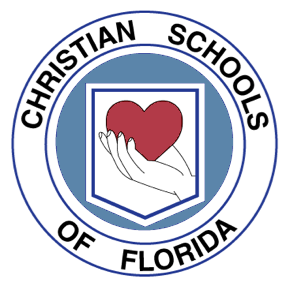Accreditation Strand #1
Clear Purpose
Mission and vision statements; transformational worldview
-
The school has a written mission statement that articulates clearly to its community why the school exists and who the target audience is. The school also has a written vision statement that contains a shared commitment to continuous school improvement including two essential components: the spiritual growth and academic performance of students.
A school successfully implementing this strand establishes expectations for student growth and learning that are aligned with the school’s mission and vision that are supported by school personnel and school stakeholders. These expectations serve as the central focus for assessing student performance and school effectiveness. The school’s mission and vision guide allocations of time, and human, material, and fiscal resources.
The school intentionally commits to stimulating the spiritual growth and understanding of students by engaging students in the study of the Scriptures, teaching them methods for a life-time of biblical study, showing them how to develop a biblical/transformational world and life view, and providing opportunities throughout the curriculum for them to perceive God at work in all areas of history and life. The school engages students in activities of spiritual renewal and empowerment and provides opportunities for service and application.
Standards
Artifacts
* Required-
School Maintains and Articulates Mission and Vision Statements
The school has two major, guiding written statements for mission and vision that are consistently reviewed & revised and that articulate clearly 1) its mission, including whether it is intended primarily for children of believers or for outreach, and 2) its vision, including continuous school effectiveness and school improvement.
Artifacts Postings of Mission/Vision statements School Mission statement School Vision statement -
School Has Philosophy of Education
The school has a written philosophy of education, reflecting a commitment to Biblical perspectives and expressing a Reformed and/or transformational position, through which the student is enabled to develop and demonstrate a Christian view of God, man, and the world.
Artifact Written Philosophy of Education -
School Has Educational Objectives
The school translates the mission and vision of the school into written overall educational objectives.
Artifact Written Educational Objectives -
School Maintains Admissions Practices
The school carries out admissions practices for families and students targeted by the mission and purpose statements and enrolls those for whom it has appropriate programs, in compliance with applicable local, state, and federal rules and laws (e.g. ADA).
Artifacts Admissions Information (eg, brochure) Admissions Interview Schedule -
School Has Non-Discriminatory Policy
The school practices a non-discriminatory policy in which gender, race, or ethnicity of students are not factors in admissions or the application of any of its programs or processes.
Artifacts Non Sexual Harassment Policy * Nondiscrimination Policy (school publications and public advertisements) * Student Handbook * -
School Communicates Accurate Level of Accreditation
The school accurately represents the school’s status level of accreditation with CSF to its parent membership and to the public in general.
Artifacts Admissions Information (eg, brochure) Admissions Web page Public Relations pieces -
School Maintains Profile of Students
The school develops and continuously compiles a profile of its students, graduates, and target community.
Artifact Profile of Graduates -
School’s Mission and Vision Guide Learning
The school ensures that the school’s mission and vision guide the teaching and learning process.
Artifact Curriculum Guide * -
School Embraces Christian Worldview
The school embraces a Christian worldview that (a) integrates learning with faith, stimulates informed, biblical thinking, (b) encourages a growing understanding of God as the sovereign lord of the universe, (c) views the church as his transformational agent, (d) encourages a growing understanding of the holy scriptures and its relevancy to personal faith and Christian walk, (e) demonstrates a commitment to presenting each student with her/his need for a personal trust in Jesus Christ alone as Lord and Savior, and (f) demonstrates that it encourages each student towards a knowledge of and love for the Scriptures as the sole rule for faith and practice.
Artifacts Adherence to Transformational Education Bible Instruction Class Devotions Evidence of Evangelism List of Student Service and Travel Opportunities School’s Statement of Faith Student Chapel Schedules Worldview Training and Integration in Curriculum Guide -
School Presents Students Opportunities for Lifetime of Christian Ministry
The school presents to students opportunities to explore avenues for a lifetime of Christian ministry and service in fulfillment of the cultural mandate and the great commission.
Artifact List of Student Service and Travel Opportunities -
School Engages Students in Worship
The school engages students in the practice of worship and praise.
Artifact Student Chapel Schedules -
School Provides Opportunities for Christian Service
The school provides opportunities for Christian service.
Artifact List of Student Service and Travel Opportunities -
School Shows Adherence to Transformational Ed and/or Historic Creeds
The school shows adherence to the principles of transformational education and/or embraces one or several of the following historic creeds:
- The Westminster Confession of Faith and the Larger and Shorter Catechisms
- The Heidelberg Catechism
- The Canons of Dordt
- The Thirty-nine Articles of the Anglican Church
- The Second London Confession of Faith
- The Philadelphia Confession of Faith
- The Augsburg Confession
- The Solid Declaration of the Formula of Concord
Artifacts
* Required -
